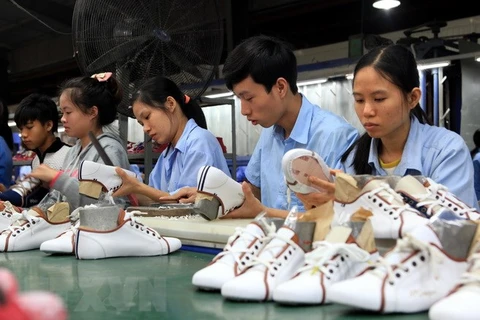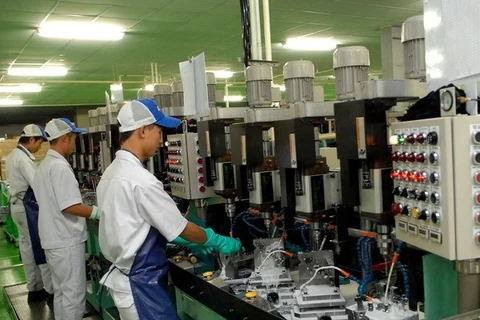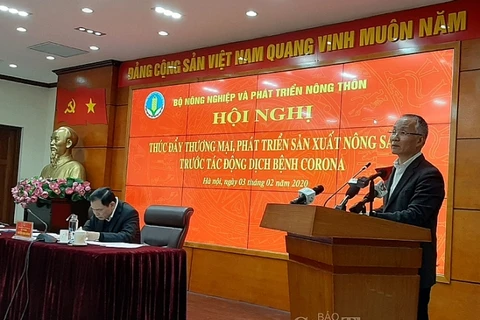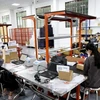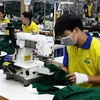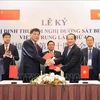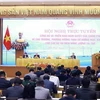 A brake production line of the Japanese-invested Nissin Brake Vietnam Co. Ltd in Vinh Phuc province (Photo: VNA)
A brake production line of the Japanese-invested Nissin Brake Vietnam Co. Ltd in Vinh Phuc province (Photo: VNA) Hanoi (VNA) – Growth of Vietnam’s industrial sector is likely to slow down in the first quarter of 2020 due to negative impacts from the acute respiratory disease caused by a novel coronavirus (COVID-19), according to the General Statistics Office (GSO).
Sectors using materials imported from China are badly affected since China has been a major supplier of materials and accessories for Vietnam. The manufacturing and processing sector, which account for the lion’s share of the industrial sector, will be the hardest-hit.
The GSO said if the COVID-19 outbreak is stamped out in the first quarter, the industrial sector is projected to grow 2.68 percent compared to the same period last year.
The manufacturing and processing sector is likely to expand just 2.38 percent instead of 10.47 percent in case of no disease.
On the other hand, if the disease lasts until the end of the second quarter, the industrial sector’s growth is forecast to reach nearly 6.99 percent. In this scenario, the manufacturing and processing sector is estimated to expand 8.51 percent.
Other sectors will also be affected, especially garment-textile, leather and footwear production. In the first three months of the year, the textile sector is expected to grow 1.9 percent, while the garment sector is forecast to contract 1.5 percent and the leather and shoe production sector is likely to expand 0.5 percent. Without COVID-19, the growth of these sectors are likely to reach 10.5 percent, 7.9 percent and 8.5 percent, respectively.
The production of motor vehicles and metals may also slow down in the first quarter by rising only 6.9 percent and 5.2 percent, respectively. Meanwhile, electronic device, computer and optical device production will possibly see a decline of 2.3 percent in the period.
The GSO has proposed the Government address bottlenecks in a bid to accelerate the implementation of major public investment projects nationwide, thus boosting socio-economic development, said its General Director Nguyen Bich Lam.
The Government is advised to take supportive measures, such as seeking alternative suppliers, reducing export-import tariffs and working to boost domestic consumption./.
VNA

